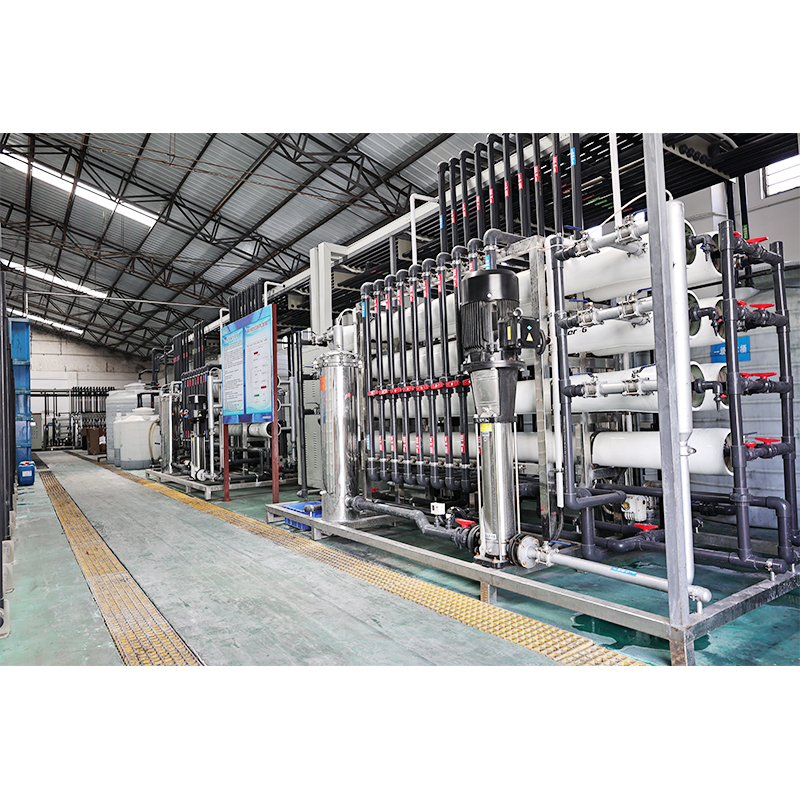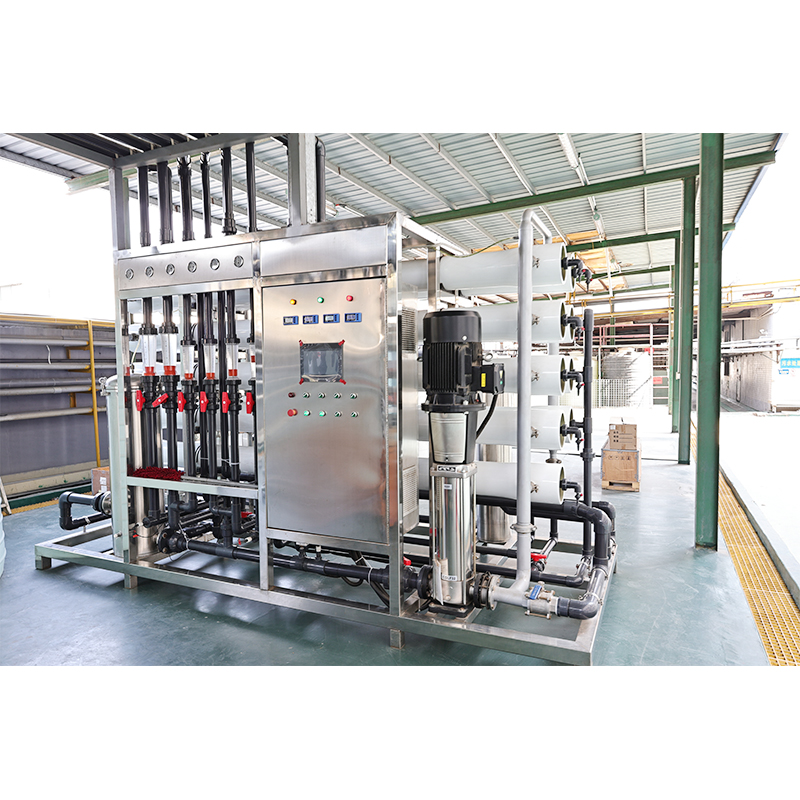What are the key factors affecting the desalination rate of seawater industrial RO membranes?
Release Time : 2025-11-10
The desalination rate of a seawater industrial RO membrane is a core indicator of its separation performance, directly determining the quality of the produced water and the operational efficiency of the seawater desalination system. Its desalination rate is dynamically influenced by multiple factors, requiring comprehensive analysis from dimensions such as feed water characteristics, operating conditions, membrane material characteristics, and system maintenance.
Feed water salt concentration is a fundamental factor affecting the desalination rate. The type and concentration of dissolved salts in seawater determine the magnitude of osmotic pressure, which is the main driving force of the reverse osmosis process. When the feed water salt concentration increases, the osmotic pressure difference across the membrane increases, requiring a higher operating pressure to maintain the product water flux. However, under constant pressure, a high salt concentration leads to a faster rate of salt permeation through the membrane, thus reducing the desalination rate. Furthermore, the characteristics of different salt ions also affect the desalination effect. For example, divalent ions (such as calcium and magnesium ions) generally have a higher desalination rate than monovalent ions (such as sodium and chloride ions) because their larger molecular diameter and higher charge density make them more easily retained by the membrane.
Operating pressure is a key parameter for controlling the desalination rate. Reverse osmosis overcomes osmotic pressure by applying pressure, causing water molecules to diffuse from the high-salt side to the low-salt side. Theoretically, increasing pressure increases permeate flux and improves desalination rate, but the actual effect is limited by membrane performance and concentration polarization. When the pressure exceeds a critical value, the salt concentration on the membrane surface rises sharply, forming a concentration polarization layer, leading to increased salt permeation and a stabilization or even decrease in desalination rate. Therefore, pressure settings must be optimized based on feed water quality and membrane characteristics to avoid excessive pressure causing membrane damage or energy waste.
Feed water temperature has a dual effect on desalination rate. Increased temperature reduces water viscosity, accelerating water molecule diffusion and thus increasing permeate flux. However, simultaneously, salt solubility and diffusion coefficient increase with temperature, leading to faster salt permeation and a decreased desalination rate. Generally, lower temperatures result in higher desalination rates but lower permeate flux, while higher temperatures have the opposite effect. In practical applications, a balance must be struck between permeate flow and desalination rate, for example, by maintaining the feed water temperature within a reasonable range using a temperature control system.
The pH value of the influent affects the desalination rate by altering the surface charge of the membrane and the form in which salts exist. Seawater industrial RO membrane materials (such as polyamide) typically carry a negative charge. Under neutral or slightly alkaline conditions (pH 7-8), the electrostatic repulsion between the negative charge on the membrane surface and salt ions is strongest, resulting in peak desalination. If the pH is too low (acidic environment), the functional groups on the membrane surface may be protonated, weakening the negative charge and leading to increased salt permeability. If the pH is too high (alkaline environment), scaling of salts such as calcium carbonate and calcium sulfate may occur, clogging the membrane pores and reducing the desalination rate. Therefore, it is necessary to adjust the influent pH to a suitable range by adding acid or alkali.
The characteristics of the membrane material are the fundamental factor determining the desalination rate. High-performance seawater industrial RO membranes typically have a dense separation layer and a uniform pore size distribution, effectively retaining salt ions and organic matter. The thickness of the desalination layer, porosity, and surface roughness of the membrane all affect the separation effect. For example, ultrathin desalination layers can increase water flux but may sacrifice some desalination rate; while surface coating technology can enhance the membrane's antifouling ability, indirectly maintaining a stable desalination rate. Furthermore, the membrane's chlorine resistance, temperature resistance, and chemical stability also determine its long-term desalination performance in complex seawater environments.
Influent pretreatment and system maintenance have a long-term impact on desalination rate. If suspended solids, colloids, organic matter, and microorganisms in seawater are not effectively removed, they will form a fouling layer on the membrane surface, leading to membrane fouling and scaling, significantly reducing the desalination rate. Therefore, multi-stage pretreatment (such as filtration, softening, and chemical dosing) is necessary to remove impurities and reduce the influent fouling index. Simultaneously, regular chemical cleaning can remove deposits on the membrane surface and restore membrane performance. Improper maintenance will accelerate the decline in desalination rate and shorten membrane lifespan.
The desalination rate of seawater industrial RO membranes is affected by multiple factors, including influent salt concentration, operating pressure, temperature, pH value, membrane material characteristics, and system maintenance. In practical applications, it is necessary to optimize influent conditions, adjust operating parameters, select suitable membrane materials, and strengthen system maintenance to achieve a dynamic balance between desalination rate and water production, thereby ensuring the efficient and stable operation of the seawater desalination system.







